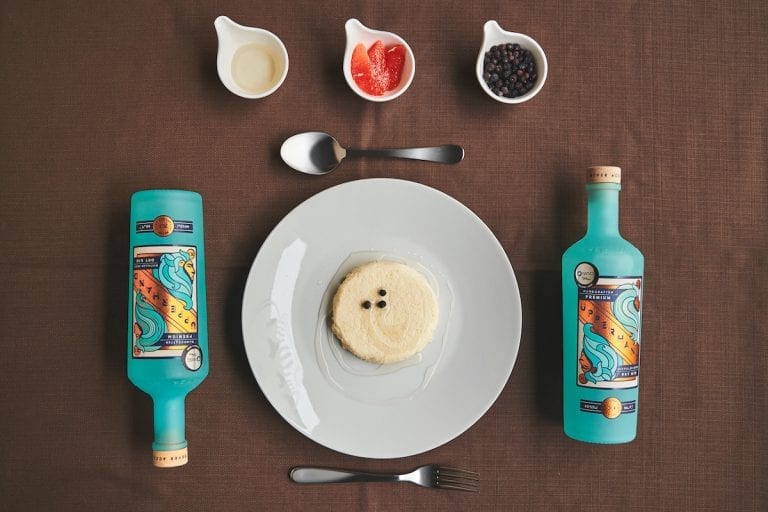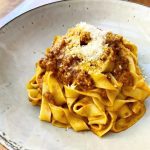How many lives can you live in a single existence? A philosophical question that's never banal, but which carries with it the weight of the choices of each of us. Especially in a historical period like the one we are living now, in which we all - at least for a minute - have found ourselves confronted with the idea of "reinventing onself," hypothetically or in reality. The story of Upperhand Gin is interesting precisely for what it symbolises, and in its own way becomes the demonstration of resistance to adversity that can show two of the hardest hit sectors by this pandemic, namely the world of hospitality and that of sport.
But let's start from the beginning, that is, from a tatami in the heart of Veneto where years ago a boy dreamed of becoming a professional athlete.
Protagonist number one: the judo champ
The first protagonist of this story is Alberto Borin, now known by all as Bert. As his surname suggests, he was born in the rural heart of Veneto (Santa Teresina, a fraction of the municipality of Noventa di Piave), in a setting surrounded by vineyards. Strong in him are that stubbornness and diligence typical of the Venetians, that dedication that makes this region one of the most productive in Italy. Yet Bert's gaze unwittingly looks much further, towards other disciplined and serious people at work, namely Japan. The way he discovered this country for him passed through judo, a sport started as a boy and which over time became the great engine of his daily life, with the growth of his sports career. In 1996 he finished third in the Italian National Championships under 18, and from then on the competition rose to the next level. In the following years, the trophies and competitions at national and international level multiplied, and with them the results: 4 national team titles and 2 absolute national titles, the prestigious participation in the world and European championships, without counting the numerous placings in international tournaments. Yet, between one ippon and the next, new passions were born in Bert's mind and old traditions sprouted, such as distillation, which he had known since childhood in the family's Pinot Grigio and Cabernet vineyards, a technique for which his father had been his first great teacher for what concerned grappa. But for all this to become a life journey and not just a dormant thought, we must wait for the arrival of the second protagonist of this story, his wife.
Protagonist number two: the Italian-Scot
Claudia is born in Stirling, Scotland, and she was immediately a citizen of the world: her mother, originally from those lands, was an opera singer and arrived in Italy thanks to her talent, with a scholarship. Here she met Claudia's future father, Navy captain. The two got married and after giving birth to their daughter in the United Kingdom, decided to settle in Tuscany.
Claudia also has roots in distillation: the Lafferty family of her mother were in fact originally from Donegal, in the North West of Ireland, from which they left in the early 20th century to seek their fortune in Scotland, dedicating themselves to the cultivation of potatoes, the production of alcohol and the construction of barrels.
The birth of Upperhand Gin
The life project of Bert and Claudia, who met in Italy and married, goes beyond the simple plan of many new families to buy a house in common and pay the lease on the car: the dream of both was to return to that root that unites them––distillation––and to do a good job at it. They therefore decided to move to Scotland, and to start studying a gin that can represent their history. Upperhand was born in October 2017, distilled on their recipe from a small distillery in Tipperary, Ireland. This distilled dry gin, obtained from a double distillation process, contains only three botanicals (in addition to the indispensable Tuscan juniper): Ligurian basil, Sicilian lemon peels and Irish dill.
The luck of Upperhand Gin
The project, which initially started with a production of only 3,000 bottles, now runs on 36,000 units, with distribution that spreads to 10 different markets in Europe, the Middle East and Canada. The attention to communication details, such as the design of the bottle with a recognizable Tiffany color, or the label inspired by tarot cards, certainly played a role in the affirmation of this gin. The name chosen comes from an expression "Get the upper hand" in sports when the underdog team wins against all odds.
The future of Upperhand Gin
If you are born as an underdog and arrive at a result, the risk is to lose the initial hunger and sit on your laurels. But an athlete knows that every goal is the first step for the next challenge, and the intentions in this sense are very clear: first of all, Upperhand will soon be joined by new products that will broaden the proposal, and then arrive at the real big step, that is to open their own distillery in Scotland where to continue the production of gin, but also to start working to create their own Scotch Whiskey.
Sometimes second lives can be as ambitious and stimulating as the first ones, and what seem like moments of pause are just moments in preparation to take the big leap, in the direction of a quality dream.
by Federico Silvio Bellanca


 Wine promotion, vineyard uprooting, and support for dealcoholised wines: the European Commission's historic compromise on viticulture
Wine promotion, vineyard uprooting, and support for dealcoholised wines: the European Commission's historic compromise on viticulture A small Sicilian farmer with 40 cows wins silver at the World Cheese Awards
A small Sicilian farmer with 40 cows wins silver at the World Cheese Awards Women are the best sommeliers. Here are the scientific studies
Women are the best sommeliers. Here are the scientific studies Where to eat at a farm stay in Sicily: the best addresses in the Provinces of Trapani, Palermo, and Agrigento
Where to eat at a farm stay in Sicily: the best addresses in the Provinces of Trapani, Palermo, and Agrigento Wine in cans, bottle-fermented, and alcohol free: the unstoppable change in Gen Z’s tastes
Wine in cans, bottle-fermented, and alcohol free: the unstoppable change in Gen Z’s tastes







